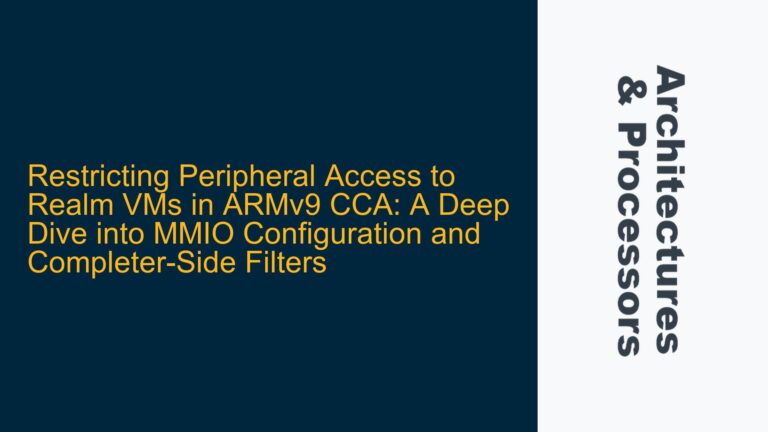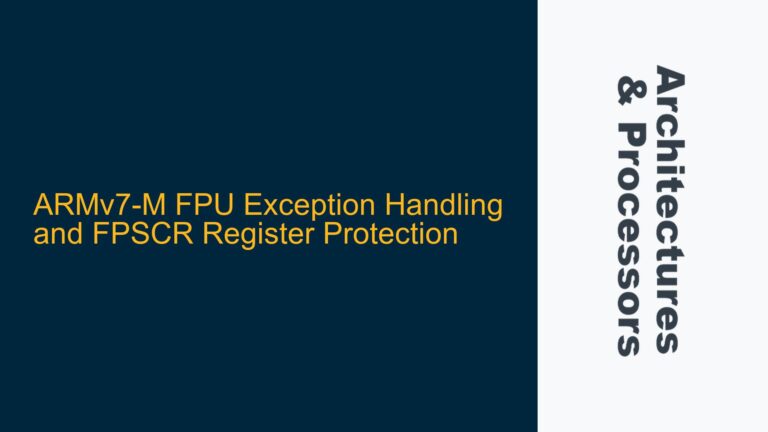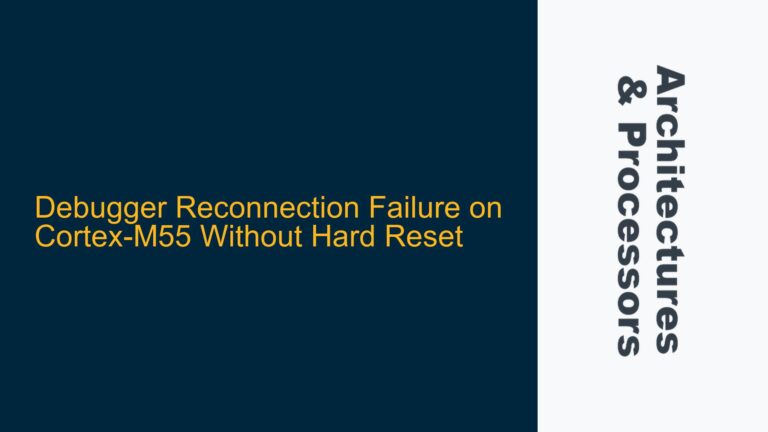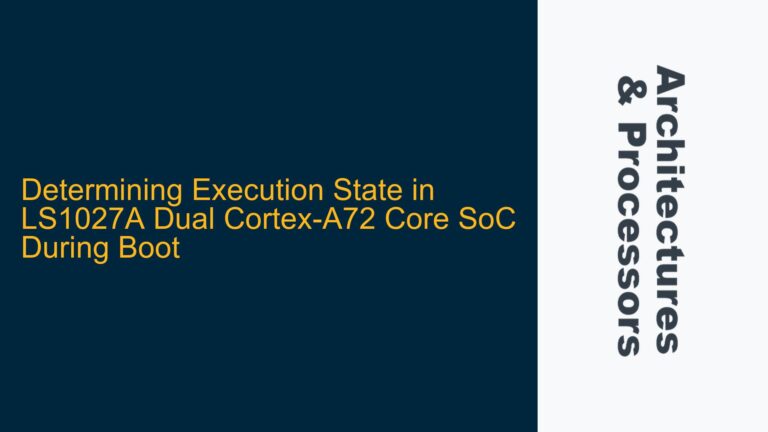Understanding the SC000 Anti-Tampering Feature and Its Importance
The SC000 processor, part of Arm’s SecurCore family, is designed for secure embedded applications, particularly in environments where resistance to physical and logical attacks is critical. One of its standout features is the anti-tampering mechanism, which is essential for safeguarding sensitive data and ensuring the integrity of the system. Anti-tampering features typically include hardware-based protections against physical attacks such as probing, fault injection, and side-channel analysis, as well as logical attacks like unauthorized firmware modifications.
The anti-tampering feature in the SC000 is implemented at the hardware level, leveraging Arm’s expertise in secure processor design. This includes mechanisms such as tamper detection circuits, secure boot, and memory protection units (MPUs) that work in tandem to detect and respond to tampering attempts. For instance, tamper detection circuits can monitor environmental conditions like voltage, temperature, and clock frequency, triggering a response if anomalies are detected. Secure boot ensures that only authenticated firmware can execute, while MPUs restrict access to critical memory regions.
However, the detailed implementation of these features is often protected under a Non-Disclosure Agreement (NDA) due to their sensitive nature. This is standard practice in the semiconductor industry, especially for security-related technologies, to prevent malicious actors from gaining insights that could be used to circumvent these protections. As a result, developers seeking to implement the SC000 in their projects must navigate the process of obtaining access to this information through official channels.
Accessing Detailed Documentation on SC000 Anti-Tampering Features
To gain access to the detailed documentation on the SC000 anti-tampering features, developers must engage with Arm’s Field Application Engineers (FAEs) or their company’s Arm account manager. These representatives are responsible for facilitating access to restricted materials, including technical documentation, design guidelines, and application notes that provide in-depth insights into the anti-tampering mechanisms.
The process typically involves signing an NDA, which legally binds the recipient to confidentiality regarding the disclosed information. This step is crucial for Arm to maintain the security of its intellectual property while still enabling customers to implement the SC000 effectively. Once the NDA is in place, developers can access the necessary documentation, which may include:
- Detailed descriptions of the anti-tampering hardware and software mechanisms.
- Guidelines for integrating the SC000 into secure systems.
- Best practices for configuring and testing the anti-tampering features.
- Case studies and examples of successful implementations.
Engaging with Arm’s FAEs or account managers also provides an opportunity to discuss specific project requirements and receive tailored advice. This can be particularly valuable for developers working on high-security applications, such as payment systems, IoT devices, or industrial control systems, where the anti-tampering features of the SC000 are a critical component of the overall security strategy.
Implementing and Validating SC000 Anti-Tampering Features in Your Project
Once access to the detailed documentation has been obtained, the next step is to implement and validate the SC000 anti-tampering features in your project. This process involves several key activities, including hardware integration, firmware development, and rigorous testing to ensure that the anti-tampering mechanisms function as intended.
Hardware integration focuses on connecting the SC000 processor to the rest of the system while ensuring that the physical security measures are properly implemented. This includes designing the PCB layout to minimize exposure to tampering, incorporating tamper detection sensors, and ensuring that the power supply and clock signals are stable and secure. The documentation provided by Arm will include specific guidelines for these aspects, helping developers avoid common pitfalls and achieve a robust implementation.
Firmware development involves configuring the SC000’s anti-tampering features through software. This includes setting up secure boot sequences, configuring the MPU to protect critical memory regions, and implementing response mechanisms for tamper detection events. For example, if a tamper event is detected, the firmware might erase sensitive data, reset the system, or enter a secure state to prevent further exploitation. The documentation will provide detailed instructions and code examples for these tasks, enabling developers to implement them efficiently.
Testing and validation are critical to ensuring that the anti-tampering features work as intended. This involves both functional testing, to verify that the features operate correctly under normal conditions, and penetration testing, to assess their effectiveness against potential attacks. Functional testing might include verifying that the secure boot process correctly authenticates firmware, while penetration testing could involve attempting to physically probe the device or inject faults to trigger tamper detection. The documentation will provide guidance on designing and executing these tests, as well as interpreting the results to identify and address any weaknesses.
Throughout the implementation and validation process, it is important to maintain a close relationship with Arm’s FAEs or account managers. They can provide ongoing support, answer technical questions, and offer insights based on their experience with other customers. This collaboration can help ensure that the SC000 anti-tampering features are implemented effectively, providing the highest level of security for your project.
In conclusion, the SC000 processor’s anti-tampering features are a powerful tool for securing embedded systems, but accessing and implementing them requires careful navigation of Arm’s documentation and support channels. By understanding the importance of these features, engaging with Arm’s representatives, and following best practices for implementation and validation, developers can leverage the SC000 to build highly secure and reliable systems.






